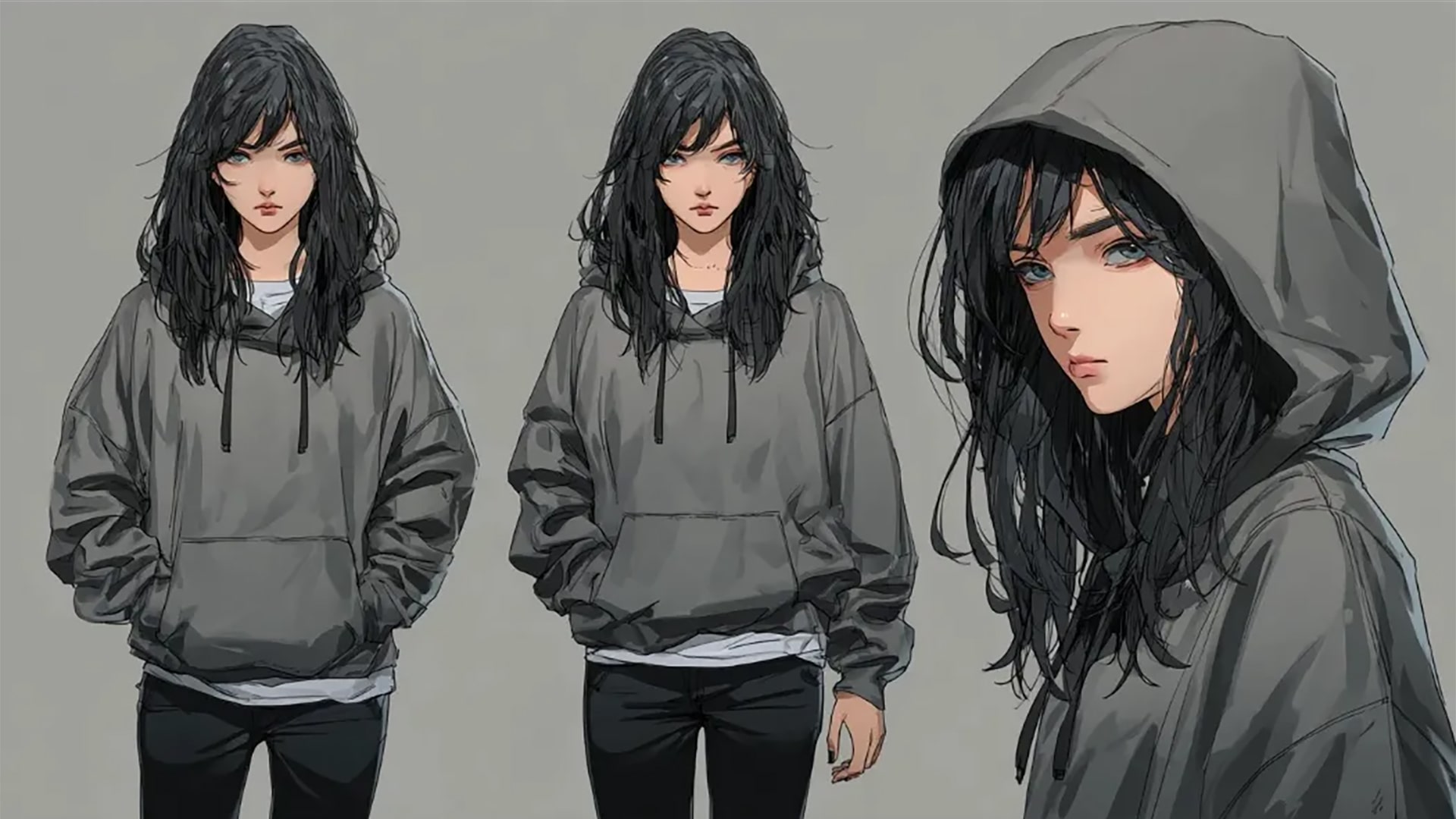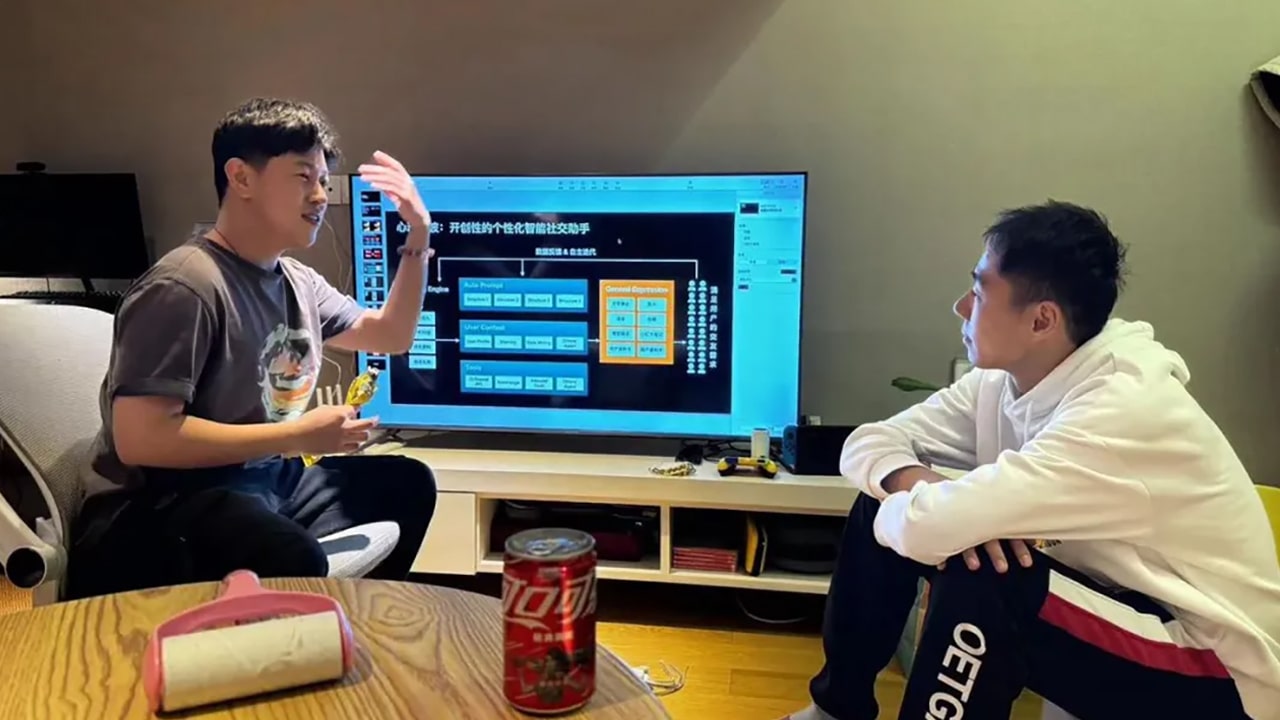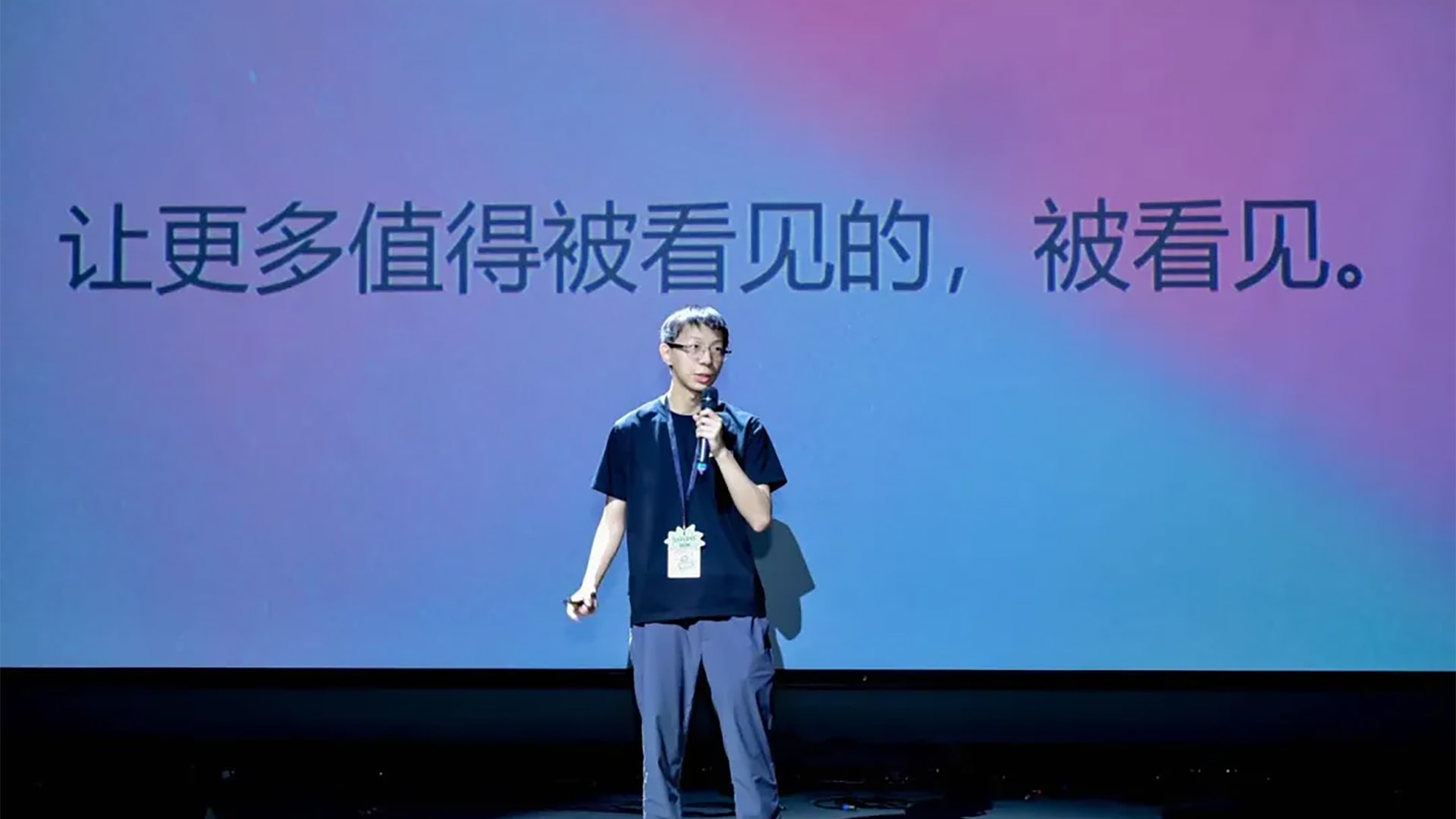100 AI Creators is a weekly series featuring conversations with China’s leading minds in artificial intelligence. As technology evolves, their perspectives shed light on the ideas driving the AI era across borders.
Video generation has become one of the most capital-intensive and competitive tracks in AI. This year, total funding in the space is expected to surpass USD 1 billion. Its rapid growth stems from a combination of technical breakthroughs, social media demand, and rising interest in tools that boost efficiency and enable personalized storytelling.
From OpenAI and Google to ByteDance and Kuaishou, major players are investing heavily, competing over parameters, frames, and resolution. But for many creators, the reality is counterintuitive: despite the growing number of AI-driven tools, making a video often feels harder than ever.
On X, creator PJ Accetturo live streamed his attempt to produce a short film using AI. The process required switching between five or six platforms, from scripting and storyboarding to character design, music, and editing. One Xiaohongshu influencer said it took her seven days and around RMB 2,000 (USD 280) to create a one-minute AI-generated mini drama.
On paper, anyone can make a video with AI. In practice, many get stuck in the workflow.
AI Now! recently came across a new tool called CrePal, which claims to simplify the process. Users enter a single line of text, and the system generates a complete video. For example, entering a prompt like “20-second McDonald’s hotpot commercial” generates a complete video without additional input:
Video generated by CrePal in response to a prompt requesting a “20-second McDonald’s hotpot commercial.”
Unlike tools such as Kling AI, Dreamina, or Vidu, CrePal functions more like a director, managing the entire video production process. It’s designed for users who have a clear idea of the video they want to create but lack the time or expertise to handle the technical complexity. For highly specific shots or finely tuned visual detail, specialized tools like Kling or Vidu remain more suitable.
CrePal’s core strength lies in orchestrating multiple video models to execute a complete production task, making it especially useful for independent creators.
When a user enters a line of text, CrePal does the following:
- Intention recognition: Identifies whether the goal is to produce a brand ad, vlog, or short-form narrative.
- Task decomposition: Breaks down the creative process into subtasks like scriptwriting, storyboard planning, asset generation, sound matching, editing, and visual effects.
- Script planning: Drafts a preliminary script and suggests camera movements based on the initial prompt.
- Frame generation: Creates still visuals using tools like Midjourney or GPT-Image.
- Video generation: Compiles footage through video tools such as Veo, Kling, and Seedance.
- Music scoring: Leverages audio AI platforms like Suno to generate stylistically aligned background tracks.
- Final cut: Applies automated editing to synchronize rhythm, audio, and subtitles, exporting platform-optimized formats for Douyin, Xiaohongshu, and YouTube Shorts.
For advanced users, CrePal also supports full customization at every stage of the process.
AI Now! tested the tool with a moderately complex prompt to evaluate its performance:
“Please create a three-second 16:9 shot in a futuristic ruined city. It’s drizzling outside. From the window of a semi-basement, we see a simple broken flowerpot with a small, modest red flower blooming inside. Outside the window, in the rain, there’s some scattered trash like soda cans and glass bottles in both the near and far view. The camera shows this from the perspective of a 17-year-old girl with black hair. It begins from the side of the back of her head, then pushes toward the flower for a close-up.”
The prompt included elements that are often difficult for video generation systems to handle, such as shifts in camera distance, changes in focal points, and subject tracking. Despite a minor misinterpretation of the flower design, the output seemingly met expectations. CrePal was able to handle the scene with enough accuracy to substitute for basic storyboard work.



Liu Jiaming, CrePal’s founder, began his career in 2020 as a product manager at Tencent’s WeChat division, more than two years before the launch of ChatGPT. He observed that casual users often overestimated AI’s capabilities. “Kids would ask AI how to assemble a toy car. Elderly users would speak to it in dialects, asking it to buy things,” he said. At the time, AI wasn’t equipped to handle such requests.
Liu turned his focus to what are now known as agents, systems capable of solving problems and retaining memory.
In March 2024, he founded his own company. His first product, an AI-powered dating assistant, was too dependent on viral traction. He soon pivoted to video-focused agents. That same year, he launched AI Vlog, a video editing tool for vloggers that briefly topped the daily and weekly charts on Product Hunt.
Yet adoption was limited by one key bottleneck: the speed at which users could shoot their own footage. To better understand the challenge, Liu began learning how to create AI-generated videos himself. He enrolled in numerous online courses but found them superficial. None addressed the real friction points.
That experience sparked the idea for CrePal.
“People don’t avoid video generation tools because they are unwilling to try,” he said. “They avoid them because there’s no agent that’s both professional and understands their needs.”
CrePal is still in early validation. Its performance depends heavily on the quality of third-party models, which continue to face issues around stability and visual aesthetics. But its differentiation lies in its approach. Rather than emphasizing raw model power, CrePal prioritizes orchestration, the ability to coordinate across tools.
This positions it as something distinct: not a model developer, not an editing suite, and not a standalone software tool, but a coordination hub and creative interface.

The following transcript has been edited and consolidated for brevity and clarity.
Not flawless, but faster and more affordable
AI Now! (AN): CrePal debuted at the Guancha press conference. After your talk, my first thought was: “This solves my biggest pain point as a video creator.” But then I wondered, why hasn’t anyone done this before?
Liu Jiaming (LJ): Before 2025, video generation technology simply wasn’t ready. The major shift came earlier this year. New video AI models now allow creators to generate usable footage. In addition, Gemini Cloud gave us multimodal reasoning capabilities, which are essential for CrePal. When we launched AI Vlog in 2024, the infrastructure still hadn’t caught up. That’s no longer the case.
Another reason is market readiness. In 2024, when I told investors I was building an agent, many thought it was a scam. “What’s an agent? Can it even make money?” they asked. But after the breakout success of Manus this year, the concept is much better understood.
Some products only gain traction when the timing is right. Founders just need to deliver them when that window opens.
AN: The video generation space is extremely competitive. Why enter such a crowded market?
LJ: Because most products are not good.
Many rely on templates or workflow-based systems. But you can’t produce a refined short video with just a single-line prompt. And node-based user interfaces are too complex for most people.
A lot of video AI startups don’t understand creators’ actual pain points. Some may be overfunded and rely too heavily on instinct. Many build closed systems or inflexible templates. But if you’ve ever made content, you know that this approach limits creativity.
Creators need space to iterate and be inspired during the process.
I believe most of today’s video generation tools will be obsolete within one or two years. The workflow-based model will fade. CrePal’s open, integrated agent approach will become the standard.
More than a token arbitrage
AN: What’s the most difficult engineering challenge right now?
LJ: Editing. No existing model handles it well.
Fortunately, our team moves quickly. We built our own agent-powered editing system, which I believe is among the most capable globally. It supports precise understanding, flexible interaction, and fast response to user input.
AN: What’s one product detail you’ve invested a lot of effort into, but most users don’t notice?
LJ: Scene and character reference generation.
Anyone who uses image generation models knows how hard it is to maintain stylistic consistency. Writing effective prompts takes real skill. We spent a significant amount of time optimizing how prompts are interpreted so the agent better understands user intent.
Image models are more stable than video models right now, so that helps.
AN: CrePal avoids competing directly with large players at the model level. Is your advantage in user experience?
LJ: Yes. We’re continuing to refine the experience so that creators can enter and stay in a deep work state.
For example, we’re exploring batch generation for storyboard frames. Once scripts and character designs are ready, why not produce ten reference shots at once, display them in a preview board, and let users quote or edit directly?
We’re also building a community where users can share their work and learn from each other. That’s my top priority.
AN: You’ve said you’ll never profit from token arbitrage. Instead, you charge a service fee for orchestration. Why?
LJ: Primarily to save users money. I believe CrePal is the most cost-effective solution for 90 percent of AI video creators.
Some models output cleaner initial frames when used in a particular format, but only a handful of experienced users know this. CrePal reduces trial-and-error by handling those choices.
Users pay for CrePal’s reasoning and orchestration, not for access to the models themselves. We don’t build the models; we help people use them more effectively. Relying on token arbitrage doesn’t work in the long term. Our value lies in lowering the learning curve and improving efficiency.
AN: How is revenue so far?
LJ: We officially launched the beta on July 16. As of August 1, we have more than 5,000 registered users. Within 48 hours, we generated over USD 500 in subscription revenue.
Whoever masters orchestration, wins
AN: You’ve focused on agents since 2023. The term is now widely used. What’s the real value?
LJ: Innovative interaction design. That’s how you collect user memory and process data, which are two important future moats.
Most teams overlook this. They don’t consider what data is worth storing or what memories are worth recalling.
In early 2024, I debated with a well-known investor who claimed memory wouldn’t matter, arguing that future models could infer everything from minimal input. That’s an unrealistic assumption. Even the most advanced AI models need the right context to perform well.
AN: Some critics say agent-based apps are just wrappers and lack real innovation.
LJ: They are mistaken. Deep industry expertise isn’t the most important factor when building a vertical agent. It matters, but only to a certain extent.
The real differentiator is whether the team understands how to design and implement agent systems. That’s where most video agent teams fail.
Think of it like gaming. A professional League of Legends player like Faker may be exceptional at playing, but that doesn’t mean he can design or build the game itself.
AN: CrePal’s value lies in orchestrating video models. Will the power dynamic shift from model makers to orchestrators?
LJ: Definitely. Think of orchestrators as platforms like Yelp or Xiaohongshu, which guide users toward actual solutions.
Right now, there are relatively few model makers. But by next year, we’ll likely see hundreds of video models entering the market. Creators will face choice overload: which ones should they use, and what combinations are most effective?
Model makers answer whether something can be done. Orchestrators figure out the fastest and most effective way to do it.
Once users experience CrePal, they find it difficult to return to manual workflows. Our system delivers significantly higher efficiency and ease of use.
CrePal is a practical product. In terms of relevance and impact, I see it on par with many model companies. I believe it offers a default approach to human-AI collaboration.
AN: What if tech giants copy your approach?
LJ: I’m not too concerned. Our team understands this space well and moves quickly.
To be honest, the only teams with stronger agent systems are focused on general-purpose agents or building their own vertical stacks. Anyone claiming to do exactly what we’re doing is likely overstating their capabilities.
CrePal remains a one-of-a-kind product globally.
AN: You don’t call yourself “the first” or “number one”?
LJ: Our users don’t care about that. They care about whether the product works, solves their problems, and saves them money. That’s all that matters to me.
AN: Final question. What are three books that have influenced you most?
LJ: The first is “Game Theory.” It gave me a new lens for thinking strategically, especially when considering how to work with or compete against large companies.
The second is “The Crowd: A Study of the Popular Mind.” I recommend it to every entrepreneur. It helped me understand how people collectively perceive a product and how to use that understanding to shape communication and marketing.
The third is “Advanced Mathematics.” The concept of limits, in particular, has been a useful framework for decision-making.
100 AI Creators is a collaborative project between AI Now! and KrASIA, highlighting trailblazers in AI. Know an AI talent we should feature? Reach out to us.

